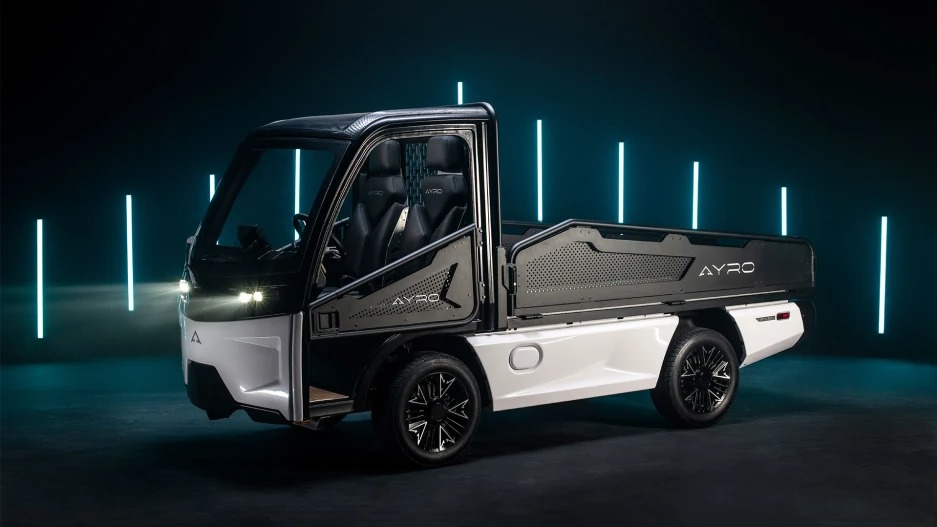- | 8:00 am
This tiny electric truck can fit through double doors—but still carries 1,200 pounds
Ayro’s new EV, the Vanish, is a low-speed vehicle that will begin large-scale production next year.

Most American trucks are now enormous, and electric trucks are especially heavy: The Ford F-150 Lightning weighs more than 6,000 pounds, thanks to its huge battery. That’s a problem for pedestrians and cyclists, who are more likely to die if they’re hit by a massive truck than a car. And the heavier the vehicle, the more tire pollution it spews into the air.
Trucks have been getting bigger in the U.S. for more than a decade. But Ayro, a Texas-based EV manufacturer, has moved in a different direction. Its truck, called the Vanish, is tiny. It’s narrow enough to fit through a double door; it’s more than six feet shorter than the Lightning, roughly the same length as a Mini Cooper. But it can still carry a load of 1,200 pounds.
“These have an equivalent payload as a big vehicle, but they’re a quarter as big,” says Ayro CEO Thomas Wittenschlaeger. “So, you can fit four times as many of them in the same footprint.”
The Vanish, which starts at $33,900 and will begin large-scale production early next year, is a low-speed vehicle, meaning it can only legally be driven on streets where the speed limit is no more than 35 miles an hour. Ayro is targeting customers that would have used glorified golf carts in the past to move around limited spaces—like corporate and college campuses, airports, or factories, for example. But it could also be used for any type of work in crowded urban neighborhoods, including package delivery.

Cruising Kitchens, a San Antonio-based food truck company that was the first customer to receive the trucks in an early production run, is currently outfitting them for food delivery. The trucks have a range of around 55 miles before they have to be charged—more than twice as far as Ayro’s customers typically need to drive in a day. At night, they can plug into an ordinary outlet to recharge the battery.
The basic chassis can be used with different attachments on the back, turning it from a truck for landscaping to a food truck, or a flatbed truck to a pickup. “Instead of buying like a fleet of 100 vehicles that are single use, you can buy 25 vehicles, and every morning you just put the payload on it that you need for that day, so you can reduce your fleet size,” says Wittenschlaeger.
The trucks could also be used on farms, where some farmers already use vintage “minitrucks” imported from Japan because of their low cost and convenience. The Ayro, while not as cheap, has the advantage of not spooking farm animals with a loud motor.
In theory, consumers could also use the Vanish to run short errands in cities. (Of course, a bike could theoretically run the same neighborhood errands; the truck is most useful when someone needs to haul a much larger load.) “If I’m just going to the drugstore to pick up a prescription, or I’m just going down to the grocery store to pick up some stuff for dinner, do I need to be driving a 4,000-pound car?” Wittenschlaeger asks.
Telo, another new electric truck aimed at consumers that can drive on highways and has a longer range, is similarly tiny. It’s a sign, perhaps, that trucks might finally start to shrink.






































